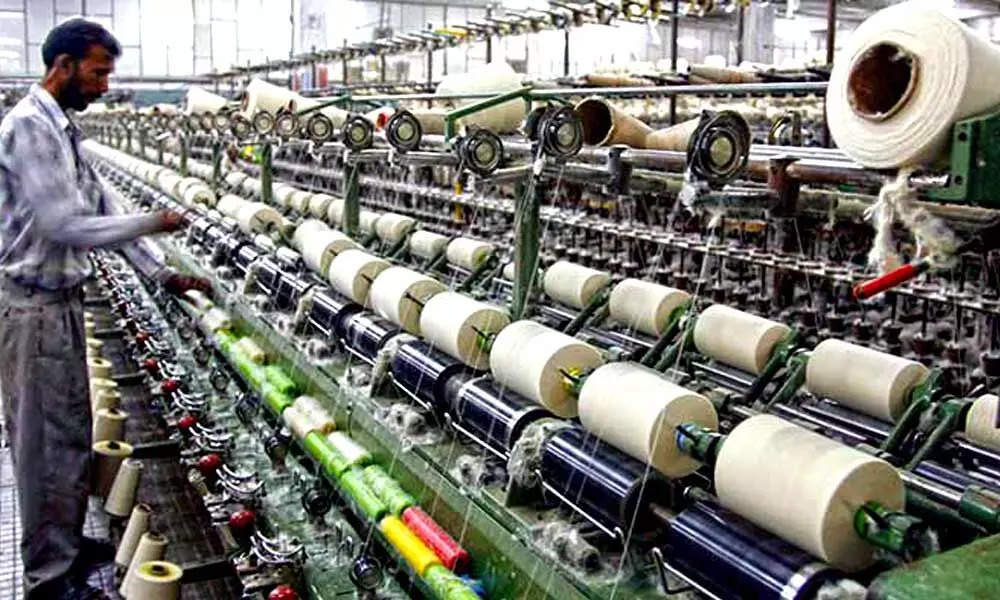Bangladesh has some readymade lessons for Indian textile industry
None had ever thought that in 1971, when Bangladesh come into existence, that this small country will be world’s second largest garment exporter and that too without the strong raw material base
image for illustrative purpose

Learning from own mistakes is a must and it seems that our Government is also learning from some of its 'mistakes' like recently it rolled back three farms laws, deferred GST proposed hike on textiles products from 5 per cent to 12 per cent.
But the sad part is that these mistakes have huge costs and still there are some mistakes that need to correct immediately, especially regarding the textile industry. Despite the efforts of the existing and immediate previous textile minister, the issue of the high price of cotton and cotton yarn is still forcing the industry to come on roads for agitation. Tirupur (Tamil Nadu), the leading knitwear hub is on strike on January 17-18, 2022 and this is happening for second time in less than 2 months. As I mentioned in one of my previous article, even after many meetings of Ministry of Textiles with industry the issue has not been resolved… whatever the internal and external reasons at various levels, one thing is clear that we are not learning. For this particular issue, international developments like US' ban on China's Xinjiang cotton, worldwide good demand of textile products… are not much responsible. Time and again, the industry has urged to ban cotton trading on commodity exchanges, but no action is there.
So is it not better that rather than repeating mistakes, we should learn from them. And why can't we learn from others especially when they are doing well compared to us. Like our garment manufacturing industry can learn a lot from its neighboring country as well as strong competitor Bangladesh.
None had ever thought that in 1971, when Bangladesh come into existence, that this small country will be world's second largest garment exporter and that too without the strong raw material base. No doubt that the country has the advantage of low-cost labour, duty advantage, high efficiency and much more other things, but there are many things which still missing in India's garment manufacturing industry and India can work on them but not work so far, and whatever has been done… is not up to that level.
We need to see the areas what are areas, India is lacking compared to Bangladesh's garment industry. Exporting garments worth $31.5 billion Bangladesh, (more than 2.5 times compared to India)
Bangladesh has a huge capacity which ensures to the global retailers and brands that this country will deliver their huge order on time and this bulk production also make Bangladesh cost-effective too. With the upcoming MITRA scheme, it will be interesting to see that will Indian garment exporters will be able to have a large scale of operations like Bangladesh.
Leading exporters of Bangladesh also has in-house production of a variety of trims and even packaging material too while this is rare in India. This also helps Bangladeshi exporters not only reduce their costing, but also complete the orders on time, to have better control on quality as well.
Sustainability is a serious concern globally and with the campaign like who made my clothes and other initiatives, customers especially youth (the major buyer of clothes) is aware than ever for environment. Image/perception also matter a lot in this regard. Bangladesh has 135 LEED green garment factories certified by the US Green Building Council (USGBC). This country has 9 out of the world's top-10 green garment factories, on top of which 500 more factories are in the process of getting LEED certification. Such impressive figures have created buzz on the sustainability front.
India is nowhere compared to these figures as it has around 30 green factories in entire textile industry. I must say here that it is not that Indian garment factories are not concerned regarding sustainability, but they are lacking to its strong competitor.
Apart from a few Indian giants, maximum Indian factories are not using state of the art machines and their technical up-gradation is far behind in comparison to Bangladesh. It is also a major reason that their overall production system is better than India.
One must give the credit to the Bangladeshi entrepreneurs for all these strengths, but it will be an injustice not to highlight here the efforts of the Bangladesh Garment Manufacturers & Exporters Association (BGMEA). The leading body of the country's garment trade, BGMEA is really impressive and aggressive in its working, not only within the country even across its leading markets. Be it to connect with new buyers, advocacy on various levels, its initiatives for workers training and health and quick solution for the industry's problems…the list is long. BGMEA working is worth appreciating. India's trade bodies also need to learn from BGMEA and work in a similarly aggressive way.
From last few months, India overall, as well as garment export, is on the right track and Indian companies have enough orders, to continue this momentum Indian garment companies should also follow the Bangladeshi way.
(The author owns a garment manufacturing setup in a rural area, which employs mostly women workers)

